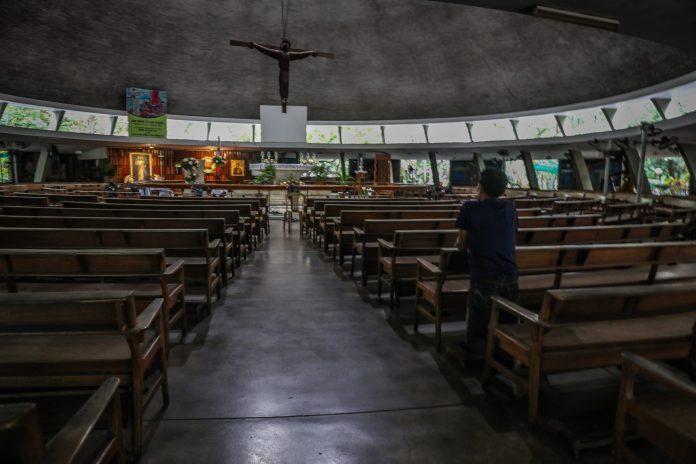The celebration of the Holy Eucharist online is “not enough” for the Filipino Catholic faithful.
“Many feel that this is still not enough and that the actual participation and reception of the holy communion are still the most effective ways to receive Christ specially in this time of crisis,” said Father Jerome Secillano, a priest in the Archdiocese of Manila
“We need to experience that physical oneness once again,” he said. “We should not be contented with the virtual unity that was necessitated because of COVID-19,” added the priest of the Nuestra Senora del Perpetuo Socorro parish in Manila.
Father Secillano said many among the faithful have expressed disappointment over the decision of authorities to limit church attendance in many areas, especially in the Philippine capital, even as community quarantine measures have started to ease on June 1.
“What made it more disappointing for many Catholics is the [government’s] decision to allow shopping malls to operate despite knowing fully well that these are frequented by people at any time of the day compared to churches whose services are scheduled and regimented,” said the priest.
On Friday, May 29, authorities said they will decide this week whether to allow more people to attend worship services in churches and other religious venues in the Philippine capital and in areas placed under general community quarantine.
The Inter-Agency Task Force on Emerging Infectious Diseases was set to meet on Monday, June 1, with religious leaders and local government executives to discuss the proposals.
The task force has earlier announced that religious gatherings would be allowed in areas under “modified general community quarantine,” but only up to 50 percent of any venue’s capacity.
The Philippine capital, however, has been placed only under the stricter “general community quarantine,” or GCQ, starting June 1.
Unlike in “modified GCQ” areas, religious gatherings in GCQ areas are not encouraged although these should be limited to 10 persons in attendance.
Mass gatherings such as but not limited to movie screenings, concerts, sporting events and other entertainment activities, community assemblies and non-essential work gatherings are still prohibited.
Gatherings that are intended for the provision of critical government services and authorized humanitarian activities while observing the minimum health standards will be allowed.
The public celebration of Masses was suspended when the government imposed the “enhanced community quarantine” across the country in March to prevent the spread of the new coronavirus disease.
Priests, however, continued to celebrate Masses that were streamed online on social media and broadcast on radio and television.
The Archdiocese of Manila has earlier submitted to the government guidelines for religious services, including an appeal to consider religious services as “essential needs” of the people.
Father Secillano said it would have been a “fitting gift” to the Church had the government allowed the public celebration of the Holy Eucharist during the Solemnity of Pentecost in Sunday, May 31.
“It would have been a sight to behold having people go out of their houses and gather in one roof to express their confidence and faith in Jesus believing that this crisis will soon be over because of Him, who is our savior,” said the priest.









